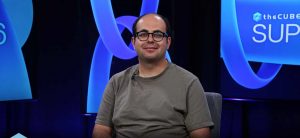Policy Lags Behind Technology, the Vanguard of Cyberwarfare
![]() Cyberwarfare. The stuff of spy novels and giddily spiraling cyberpunk stories by the likes of William Gibson—while we don’t have vat grown ninjas yet, we do have the Information Age and the Internet and that means that information is key. As our lives become increasingly digitized and networked, though, it leaves us vulnerable to outside parties exploiting those connections. This opens up a cornucopia of potential problems for large, highly technological nations like the United States and the United Kingdom. Saboteurs no longer have to simply throw their shoes into the machine-works in order to attack infrastructure or shut down industry—they could do it by infiltrating the computer networks that control them from thousands of miles away and potentially wreak havoc.
Cyberwarfare. The stuff of spy novels and giddily spiraling cyberpunk stories by the likes of William Gibson—while we don’t have vat grown ninjas yet, we do have the Information Age and the Internet and that means that information is key. As our lives become increasingly digitized and networked, though, it leaves us vulnerable to outside parties exploiting those connections. This opens up a cornucopia of potential problems for large, highly technological nations like the United States and the United Kingdom. Saboteurs no longer have to simply throw their shoes into the machine-works in order to attack infrastructure or shut down industry—they could do it by infiltrating the computer networks that control them from thousands of miles away and potentially wreak havoc.
As technology advances, however, we must be ready to handle the problems that it evokes. Some of those problems also affect our ability to defend ourselves from malicious groups be they the governments of other countries, militant groups of crackers, or even basic industrial espionage and sabotage.
In a piece about how policy lags behind technology, the UK newspaper The Globe and Mail, brings us a lengthy dissertation on this problem,
“In most areas, the relevant policies, roles and responsibilities have not kept pace with the technology – although this is changing,” said Prescott Winter, former chief information officer and chief technical officer at the U.S. National Security Agency (NSA) and now a senior official at computer security firm Arcsight Inc.
The United States has launched its own military cyber command in part to bring offensive capabilities under the preserve of the military rather than secretive intelligence agencies such as the NSA, which handles electronic surveillance. Senior officials in Britain, the US and elsewhere increasingly make speeches on the topic.
But the field still raises a host of moral, legal, ethical and practical questions so far largely unaddressed.
How could nations retaliate if it is not possible to trace the national origin of an attacker who is using only a laptop? Who should pay to protect critical national systems such as power grids owned by the private sector?
The United States recently launched the United States Cyber Command, USCYBERCOM, a subordinate to US Strategic Command to help combat exactly these sorts of problems. The department, formed on May 21st 2010, made its splash with a very interesting logo that hackers and geeks everywhere became immensely curious about when they noticed a cryptographic hash on its emblem.
The questions brought up in the article bear some merit but it’s still the stuff of movie plot and cinema magic. A great deal of important infrastructure systems do not take commands remotely (nor should they) and still require quite conventional methods to sabotage. The biggest problem that we face currently in the Information Age is that things like cyberwarfare will be more about espionage and gathering information. The technology changes but largely the same rules apply.
The discussion is already underway; although the approach to the technology itself is rather immature the way that the game plays is simply diplomacy and warfare writ digital.
Organizations like the United States Cyber Command and others will begin working on policies and standards that take into account hundreds of years of how people take advantage of interconnected systems, they will then apply those policies to our new interconnected systems. Private infrastructure will then be vetted for their ability to harden their information systems the same way we’d vet them for their ability to maintain physical security.
These situations will continue to come up in the world today as more industries tie themselves into the global information networks. Yes, policy will always lag behind technology, but the only casual difference between a physical and a digital lock is the distance from which you can pick it.
A message from John Furrier, co-founder of SiliconANGLE:
Your vote of support is important to us and it helps us keep the content FREE.
One click below supports our mission to provide free, deep, and relevant content.
Join our community on YouTube
Join the community that includes more than 15,000 #CubeAlumni experts, including Amazon.com CEO Andy Jassy, Dell Technologies founder and CEO Michael Dell, Intel CEO Pat Gelsinger, and many more luminaries and experts.
THANK YOU









